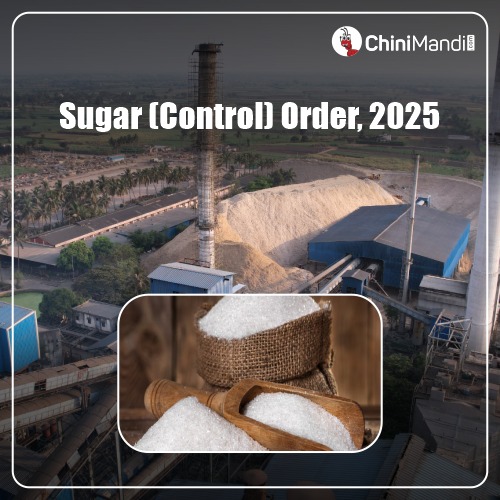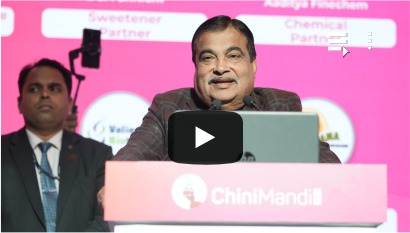On May 1, in exercise of the powers conferred by section 3 of the Essential Commodities Act, 1955 (10 of 1955) and in supersession of the Sugar (Control) Order, 1966 and the Sugar Price (Control) Order, 2018, expect as respects things done or omitted to be done before such supersession, the Central Government issued Sugar (Control) Order, 2025. It comes into force on the date of its publication in the Official Gazette.
The Government of India has conducted an in-depth review of the Sugar (Control) Order, 1966, resulting in the creation of the new Sugar (Control) Order, 2025. This revised order seeks to simplify and modernize the regulatory framework for the sugar industry, aligning it with current industry trends and technological progress.
The Sugar (Control) Order, 2025 aims to establish a more efficient, transparent, and accountable sugar ecosystem, promoting stability within the domestic market while enhancing India’s position globally.
Click here to read the Sugar (Control) Order, 2025
Key Highlights of the Sugar (Control) Order, 2025:
Digital Integration with Sugar Mills:
The new order mandates API-based integration between the DFPD portal and sugar mills’ ERP or SAP systems, enabling real-time data sharing. This minimizes redundancies and data leakages. Over 450 sugar mills are already integrated, and GSTN data on sugar sales is now linked for enhanced oversight and efficiency.
Unified Pricing Regulation:
Provisions from the earlier Sugar Price (Control) Order, 2018, have been consolidated into the new order, streamlining regulations and offering greater clarity to stakeholders.
Inclusion of Raw Sugar Under Regulation:
Raw sugar is now officially regulated and included in national sugar stock calculations. This move aligns with international standards and eliminates misleading labels like “khandsari” or “organic” for raw sugar.
Regulation of Khandsari Units:
For the first time, khandsari sugar factories with a crushing capacity over 500 tonnes per day (TCD) are brought under regulatory oversight. This ensures mandatory payment of the Fair and Remunerative Price (FRP) to farmers and enhances the accuracy of sugar production data. Of 373 khandsari units in India, 66 exceed the 500 TCD threshold.
Standardised Definitions:
Definitions for various sugar types—plantation white sugar, refined sugar, khandsari sugar, jaggery, bura, cube sugar, and icing sugar—are now aligned with those set by the Food Safety and Standards Authority of India (FSSAI), ensuring consistency across the sector.
In a move to revamp the regulatory framework of the sugar industry, the government released the draft Sugar (Control) Order last year. Following this, ChiniMandi had earlier organized a roundtable session with sugar traders, millers, and other stakeholders. This initiative by ChiniMandi was highly appreciated by both the miller and trader communities.
On September 15, sugar traders from across India gathered at the DoubleTree by Hilton Hotel in Goa for a roundtable session organized by ChiniMandi. The session focused on an in-depth discussion and brainstorming of the proposed Sugar (Control) Order. ChiniMandi had also organized a roundtable session for millers in Kolhapur on September 6, 2024. The concerns and suggestions of millers and traders regarding the proposed Sugar (Control) Order, and how to make the industry healthier, were submitted by ChiniMandi to the government.

















